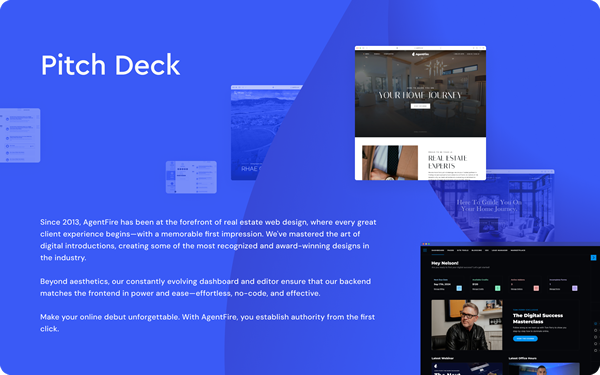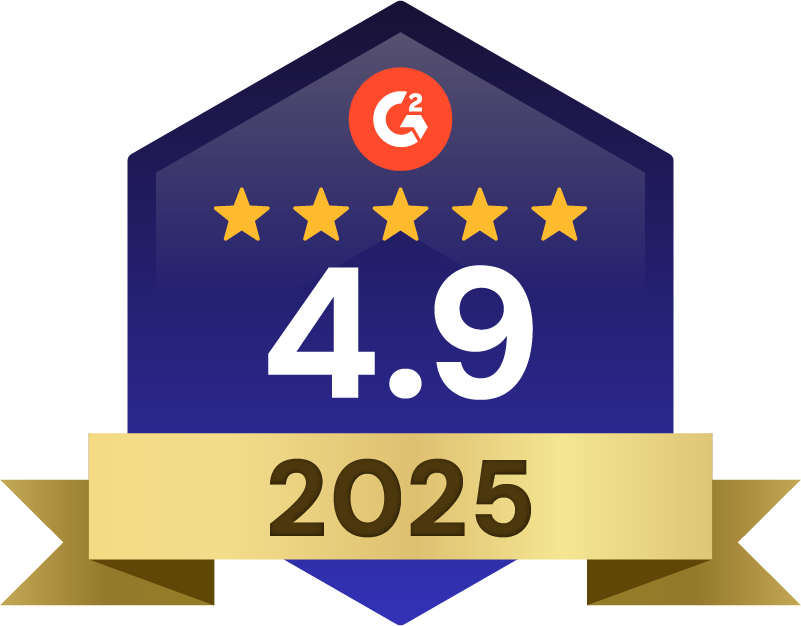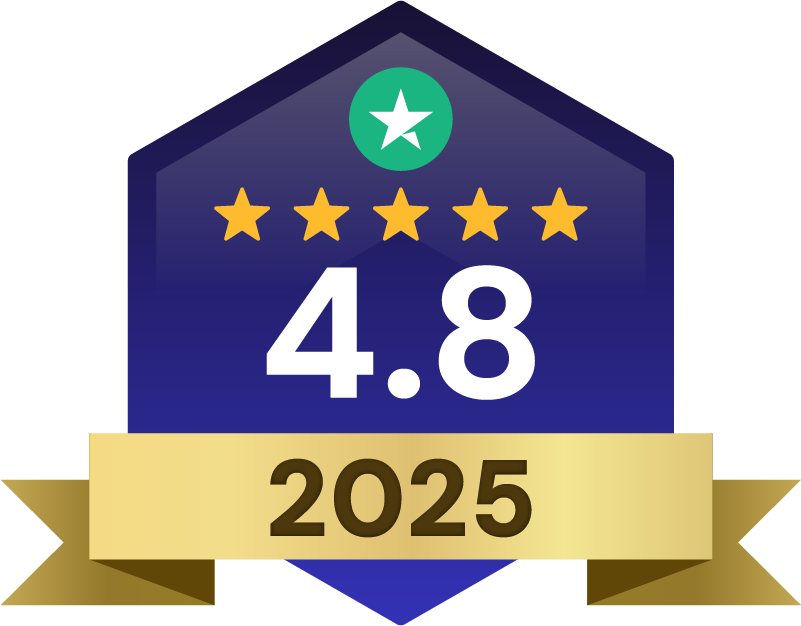Real estate ads that convert: Explore proven ad examples, formats, and ROI strategies to attract buyers, sellers, and grow your real estate brand.
Branding & Design Content Marketing Lead Generation
Real estate advertising has changed significantly over the past decade. What once relied on newspaper listings and postcards has become a digital-first system that includes video, automation, and data targeting.
This article explores 10 different real estate ad examples that use modern tools and formats. Each example includes a brief analysis to show what works and how to measure results.
This article will help you understand the mechanics behind effective real estate ads, how they are created, and how success is tracked, while also providing inspiration on where to start.
What Are Real Estate Ads? Why Do They Matter?
Real estate ads are promotional messages designed to attract potential buyers, sellers, or renters to a property or real estate service. These advertisements appear in many formats, including digital ads on social media, search engines, and real estate websites, as well as traditional formats like print flyers, postcards, and roadside signs.
Historically, real estate advertising focused on physical signs and newspaper listings. Today, the industry has shifted to digital platforms, where targeting, automation, and video content play a central role. These days, mobile ads are a primary source of discovery for most residential buyers under age 50.
Strategic advertising helps real estate professionals reach specific audiences, highlight key features of properties, and stay visible in competitive markets.
Essential Elements of Effective Real Estate Advertisements
A successful real estate advertisement connects with the audience both logically and emotionally. This happens through clear messaging, strong visuals, and strategic design choices.
The psychology behind property advertisements includes three main factors:
- Familiarity: People respond to images and descriptions that match what they’re already looking for
- Emotion: Ads that trigger positive feelings about a space get more engagement
- Simplicity: Clear, direct messages with obvious next steps perform better
Headlines make the first impression in any house advertisement. Good headlines use specific language, include numbers (“4-bedroom waterfront home”), or create curiosity (“The most affordable luxury in [neighborhood]”).
High-quality visuals help people imagine themselves in the space. Professional photos, video walkthroughs, and virtual tours are now standard in property advertisements. According to the National Association of Realtors, listings with professional photos earn a 1,200% increase in shares on social media, and 68% of potential buyers say that great photos made them want to visit the home.
Descriptions work better when they focus on benefits instead of features:
Instead of: “3 bedrooms, 2 bathrooms, large backyard”
Better approach: “Work from home in your dedicated office, host guests in the spare room, and enjoy summer barbecues in your private backyard.”
This approach helps the viewer understand how the space fits into their lifestyle.
Clear calls-to-action tell people what to do next. Examples include:
- “Schedule a showing today”
- “Get your free home valuation”
- “See more photos”
- “Download our neighborhood guide”
A CTA works best when it’s specific, easy to understand, and placed near the most engaging parts of the content.
How to Measure ROI for Real Estate Ad Campaigns
ROI (return on investment) in real estate advertising means how much value you get back from the money spent on ads. The basic formula is:
ROI = (Revenue – Cost) / Cost
For example, if you spend $1,000 on ads that help you sell a house with a $10,000 commission, your ROI is ($10,000 – $1,000) / $1,000 = 900%.
To track ROI accurately, you need to track several key metrics:
- Cost per Lead (CPL): How much you spend to get one potential client
- Cost per Acquisition (CPA): The total cost to convert a lead into a client
- Conversion Rate: The percentage of leads who take a desired action
- Click-Through Rate (CTR): The percentage of people who click after seeing your ad
You can measure these metrics using tools like:
- Google Analytics for website traffic
- Facebook Ads Manager for social media campaigns
- CRM software to track lead activity
- Call tracking tools that assign unique phone numbers to each campaign
Each advertising channel has different performance benchmarks:
| Ad Type | Average Monthly Cost | Typical Monthly Leads | Average ROI | Time to Results |
|---|---|---|---|---|
| Facebook Ads | $300-$1,000 | 30-100 | 200-400% | 2-4 weeks |
| Google PPC | $500-$2,000 | 20-80 | 150-300% | 2-6 weeks |
| $250-$800 | 25-70 | 180-350% | 2-4 weeks | |
| Print Ads | $400-$1,200 | 5-20 | 50-150% | 4-12 weeks |
| Email Campaigns | $100-$500 | 15-60 | 250-500% | 1-3 weeks |
Digital ads typically generate faster results and are easier to track than traditional methods. Consistent measurement helps you compare performance over time and improve future campaigns.
10 Innovative Real Estate Ad Examples
1. Facebook carousel ads with neighborhood highlights
This ad format shows multiple images that users can swipe through. Each image features a different aspect of the neighborhood: parks, restaurants, schools, and the property itself.
Why it works: Buyers often choose neighborhoods first, then homes. This ad type addresses lifestyle questions before focusing on the property.
2. Google local service ads
These ads appear at the top of Google search results with a “Google Guaranteed” badge, your photo, and reviews. They only charge when someone calls or messages you directly, which is why many agents rely on Google Ads to generate local leads.
Why it works: These ads build instant trust through Google verification and show only to people in your service area who are actively searching for real estate services.
3. Virtual video tours with agent commentary
These ads feature walkthrough videos where the agent explains features that might not be obvious in photos, like storage solutions, recent upgrades, or neighborhood amenities.
Why it works: Video tours save time for both agents and serious buyers by providing more information than photos alone.
4. Before-and-after renovation ads
These ads show side-by-side comparisons of properties before and after renovations, highlighting potential value in fixer-uppers or showcasing an agent’s staging expertise.
Why it works: Visual transformations are engaging and demonstrate an agent’s knowledge of property potential.
5. Hyperlocal market update ads
These ads share specific data about a small area — like a single neighborhood or even just a few streets — with recent sales, price trends, and days on market.
Why it works: Hyperlocal content positions you as the neighborhood expert and attracts both potential sellers and buyers interested in that specific area.
6. Retargeting ads with personalized listings
These ads show properties similar to ones that users have already viewed on your website, creating a customized experience.
Why it works: Retargeting keeps your listings in front of interested buyers and shows them more options that match their preferences.
7. Seasonal home feature ads
These ads highlight different property features based on the current season, such as cozy fireplaces in winter, outdoor entertaining spaces in summer, etc.
Why it works: Seasonal content feels timely and helps buyers imagine living in the home year-round.
8. Instagram Stories with interactive polls
These ads use Instagram’s poll feature to engage viewers with questions like “Which kitchen do you prefer?” or “Is this home office setup right for you?”
Why it works: Interactive elements increase engagement and provide insight into what features potential buyers value most.
9. Testimonial video spotlights
These ads feature brief client testimonials focusing on specific aspects of the agent’s service — negotiation skills, market knowledge, communication, etc.
Why it works: Real client stories build trust more effectively than generic claims about service quality.
10. Email drip campaigns for specific property types
These automated email sequences, often called email drip campaigns, target buyers looking for specific features like waterfront properties, homes with guest suites, or investment opportunities.
Why it works: Specialized content delivers more value than generic property alerts and positions you as an expert in that niche.
Simple Strategies to Track Real Estate Ad Performance
Tracking performance helps you understand which ads work and which don’t. Here are four straightforward approaches:
1. Use UTM parameters in your links
UTM parameters are tags added to the end of URLs that tell analytics tools where traffic comes from. For example, a link might include utm_source=facebook&utm_campaign=spring_listings.
2. Create unique landing pages
Make different pages for different ad campaigns. This helps you see which ads bring the most visitors and which visitors take action.
3. Use call tracking numbers
Assign different phone numbers to different ads. When someone calls, you know which ad they saw.
4. Ask leads directly
Simply ask new leads how they found you. This old-school approach still works well, especially for tracking offline advertising.
Tools That Improve Real Estate Ad Effectiveness
The right tools can make your advertising more effective and easier to manage:
Design tools:
- Canva for creating social media graphics and flyers
- Adobe Express for more advanced design options
- Unsplash or Pexels for free stock photos
Video tools:
- iMovie or InShot for basic video editing
- Loom for quick screen recordings and property walkthroughs
- Matterport for 3D virtual tours
Ad management:
- Facebook Ads Manager for Facebook and Instagram campaigns
- Google Ads for search and display advertising
- Mailchimp or Constant Contact for email marketing
AgentFire’s website platform integrates with many of these tools and provides built-in lead capture forms that connect to your CRM. This makes it easier to track which ads bring traffic to your site and how those visitors interact with your content.
FAQs About Real Estate Advertising
What is the average return on investment for real estate ads?
The average ROI for real estate ads ranges from 150% to 400% for digital campaigns and 50% to 150% for print advertising. Social media and email typically deliver the highest returns, while traditional methods like print generally have lower but still positive returns.
How much should real estate agents spend on advertising?
Most successful real estate agents spend between 10% and 15% of their gross commission income on advertising. New agents might need to invest more initially (up to 20%), while established agents with strong referral networks might spend less (5-10%).
Which real estate ad platforms deliver the best results?
Facebook, Google, and Instagram typically deliver the best results for real estate advertising. Facebook often provides the lowest cost per lead for local campaigns, Google captures high-intent buyers actively searching for properties, and Instagram excels at visual storytelling for luxury or unique properties.
How can I track the effectiveness of print real estate advertisements?
Track print ad effectiveness by using unique QR codes, custom landing page URLs, dedicated phone numbers, or special offer codes that are exclusive to each print campaign. These methods help identify which leads came from which print advertisements.
How long does it take to see results from real estate advertising?
Digital real estate ads typically show initial results within 2-4 weeks. Social media campaigns often generate leads fastest, while search engine marketing may take 4-6 weeks to optimize fully. Print and brand-building campaigns usually require 1-3 months to show measurable impact.






